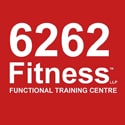
Active recovery is a great way to help your body recover after a tough workout. By engaging in some light activity—such as walking, cycling, or yoga—you can improve blood circulation and help your muscles relax and heal. What’s more, active recovery workouts can actually increase the positive effects of your previous workout, helping you reach your fitness goals faster.
Advantages of active recovery workouts
Active recovery workouts are beneficial for a number of reasons.
- First, it helps improve blood circulation and brings nutrients and oxygen to muscles.
- Second, it helps reduce inflammation and promote healing.
- Third, it helps flush out lactic acid and other metabolic byproducts that can build up in muscles during exercise.
- Finally, active recovery can help improve mental well-being and reduce stress levels.
Let’s talk about the activities you can do on your rest days and how to incorporate them into your routine!
Yoga
Yoga can help to improve circulation and flexibility, both of which are important for healing and preventing injuries. It can also help to relieve tension and stress in the body, which can further aid in the healing process. And finally, it is a great way to relax and destress after a tough workout – something that’s especially important for athletes who are looking to recover quickly.
There are a number of yoga poses that can help with active recovery. Some of my favourites include the following:
- Puppy pose – This pose is great for releasing tension in the neck and shoulders. It also helps to stretch the spinal column and increase flexibility in the spine.
- Mountain pose – This is a basic standing posture that helps to strengthen and lengthen the body. It also helps to improve balance and focus.
- Downward-facing dog – This is a popular yoga pose that helps to stretch the hamstring muscles, calves, and back muscles. It also strengthens the arms and wrists.
Swimming
As per studies, swimming is a great form of active recovery. It helps to flush out the lactic acid from your muscles, and it also keeps your heart rate up so you don’t stiffen up. Plus, it’s a low-impact activity that won’t put any extra stress on your body.
So if you’re looking for an effective way to recover from your next workout, hit the pool!
Steady-state walking or slow jogging
For one, it’s low-impact, so it’s gentle on your joints. It’s also a great way to loosen up your muscles and loosen up any knots or tight spots you may have. Steady-state walking or slow jogging is also great for releasing endorphins, which can help reduce pain and inflammation. Finally, it’s a great way to clear your mind and relax after a tough workout.
Steady-state cycling
It is a great way to do active recovery. It involves pedalling at a consistent pace for a set period of time. This is an effective way to increase blood flow and help your muscles recover from strenuous activity. Here’s how to do it:
- Warm up for 5-10 minutes by pedalling at a slow, easy pace.
- Increase your speed to a moderate level that you can sustain for the duration of your ride.
- Pedal at this moderate pace for 20-30 minutes.
- Cool down for 5-10 minutes by pedalling at a slow, easy pace again.
- Repeat this process
Light resistance training
By doing light resistance exercises, you can increase blood flow to your muscles, which helps them repair and rebuild faster. Here are a few options:
- Light Leg Presses – 20 reps, 3 sets
- Seated Leg Curls – 15 reps, 3 sets
- Lying Leg Raises – 15 reps, 3 sets
- Hamstring Stretch – 30 seconds per leg
- Calf Raise – 20 reps, 3 sets
These are just a few examples of light resistance training exercises that can be done for active recovery purposes. Remember, the key is to go lighter on the weight and higher on the reps to help your muscles repair and rebuild while still getting some blood flowing through them.
Crawling
Crawling is a great way to actively recover from a workout. It helps to improve the range of motion and increase blood flow to the muscles. To do crawling, simply get down on all fours and move your body forward by alternating your arms and legs. Remember to keep your back straight and your abdominal muscles engaged.
Start with a slow pace and gradually increase your speed as you get more comfortable with the movement. You can also add variations by adding in the different arm and leg movements. Just be sure to listen to your body and only do what feels comfortable.
Closing Note:
Active recovery has been shown to improve subsequent workouts, both in terms of performance and reducing the risk of injury. If you’re looking for a way to break up your training routine or simply want to give yourself an edge on race day, consider adding active recovery into the mix.
And if you’re still not sure how it all works, don’t worry – we have plenty of resources that can help get you started.
For more information, get in touch!
- Call us on: +91 97699 42205
- Email us on: info@6262fitness.info
Also read: 7 Best Resistance Band Exercises for a Full Body Workout


